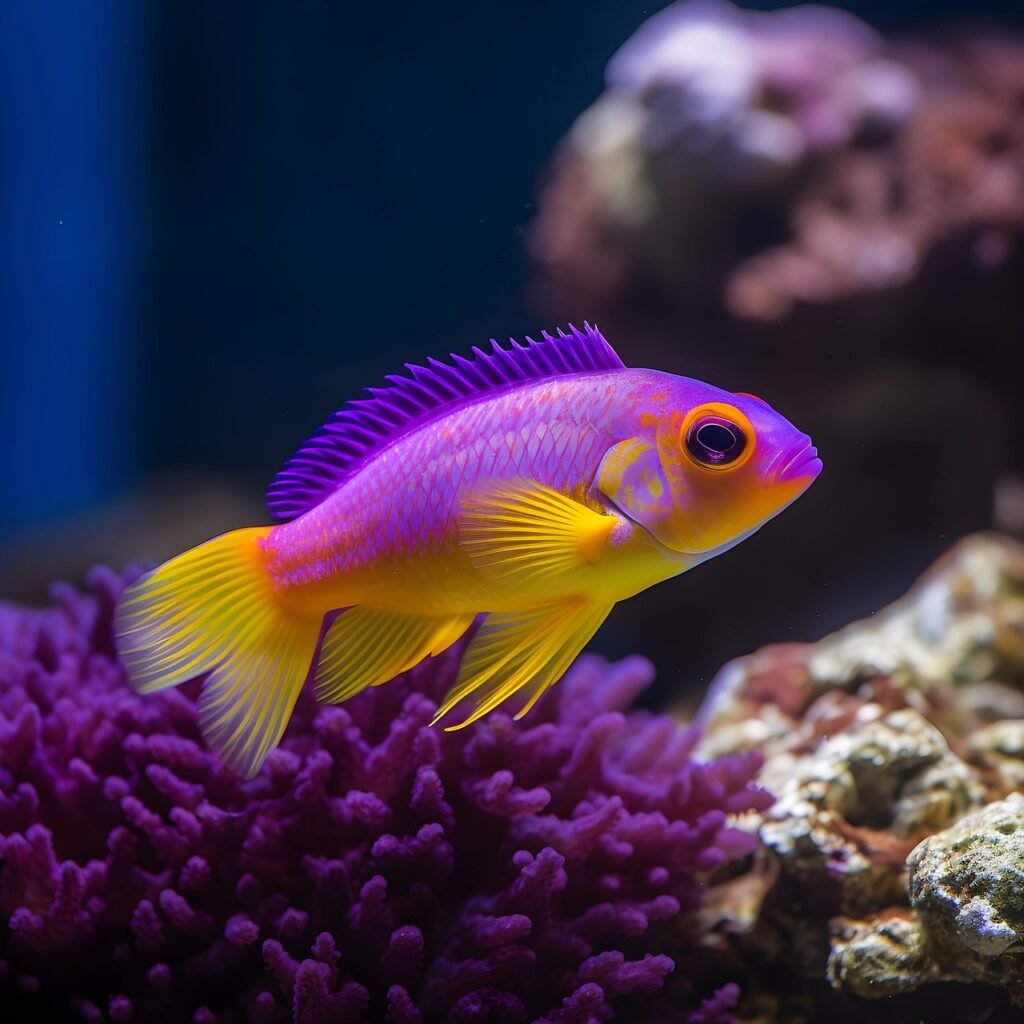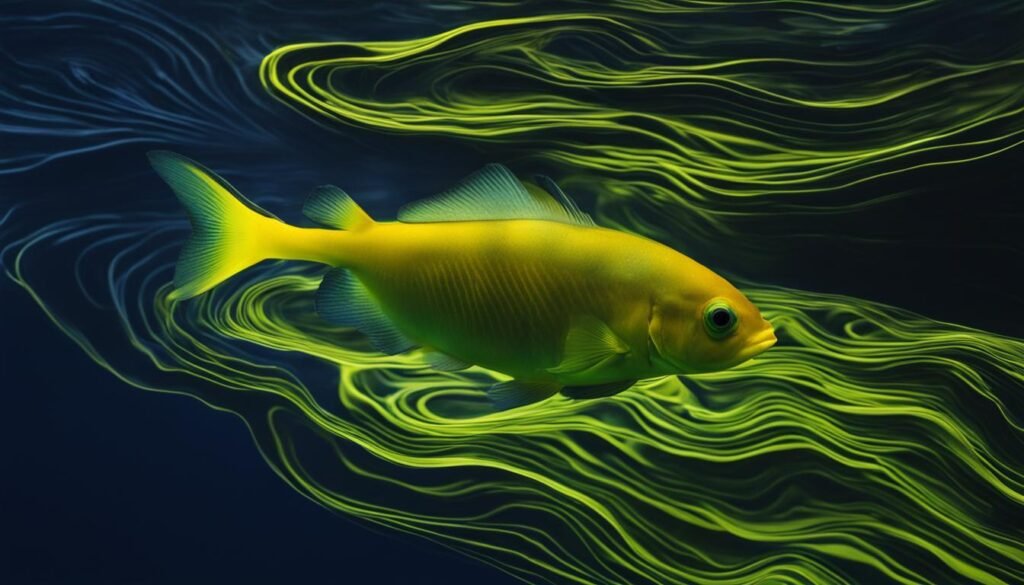Welcome to our article on fish anatomy and respiration! Have you ever wondered if fish have nostrils? In this fascinating exploration, we’ll uncover the truth about fish respiratory systems, their breathing mechanisms, and the intriguing role of gill structures.
Before we dive in, let’s address the question at hand: do fish have nostrils? While fish do have nasal openings called nares, they are not used for breathing. Instead, these nares, similar to nostrils, serve the purpose of smelling their underwater environment.
Now that we’ve clarified the nostril mystery, let’s delve deeper into the remarkable respiratory adaptations of fish. These aquatic animals have evolved various external and internal anatomical features to survive and thrive underwater.
Fish possess gills, which are feathery tissue structures responsible for extracting oxygen from water and passing it into their bloodstream. The gills consist of fleshy filaments supported by gill arches, and they play a crucial role in fish respiration.
Aside from their respiratory system, fish also have an array of remarkable sensory adaptations, including sight, smell, hearing, and taste. We’ll explore how fish utilize these senses to navigate their aquatic habitats and locate food.
So, if you’re curious about how fish breathe, the anatomy of their gill structures, and the incredible sensory adaptations they possess, join us as we dive deeper into the world of these fascinating aquatic creatures.
Fish Nostrils and Olfaction
Fish have nares, which are similar to nostrils, but they are used solely for smelling and not for breathing. The transport of odorants (odorous substances) from the external environment to the olfactory epithelium, which is the sensory surface inside the olfactory chamber, is crucial for fish olfaction.
The flow of odorants in water is controlled by convection processes, including the beating of cilia lining the olfactory chamber and the pumping action of accessory sacs. The flow over the olfactory epithelium is usually laminar.
Several factors facilitate odorant transfer to the olfactory epithelium, such as:
- The presence of stalks that penetrate the boundary layer
- Steep velocity gradients generated by beating cilia
- Devices that deflect flow into the olfactory chamber
- Parallel arrays of olfactory lamellae
- Mechanical agitation of the chamber
- Vortices
However, more research is needed to fully understand the hydrodynamics of fish olfaction.
Additional Notes:
In the olfactory chamber, fish have cilia lining the sensory surface, which play a role in detecting odorants. The pumping action of accessory sacs helps with the flow of odorants over the olfactory epithelium. Fish olfaction is a complex process influenced by hydrodynamics and various physical factors. Understanding how fish perceive odors is key to unraveling their sensory world.
Fish Respiratory System and Gill Structure
In order to survive in their aquatic environment, fish rely on their respiratory system, which includes specialized organs called gills. These gills enable fish to extract oxygen from water and release carbon dioxide, facilitating their respiration process.
The gills of fish consist of fleshy filaments supported by gill arches and filled with blood vessels. When water enters the fish’s mouth, it flows over these gill filaments. During this process, oxygen is extracted from the water, while carbon dioxide is expelled. The gill capillaries, which are located close to the surface of the gills, facilitate the exchange of these gases.
To protect the delicate gill structures, most fish species have a covering known as the gill cover. This cover helps shield the gills from potential damage, ensuring the efficient functioning of the respiratory system.
The extracted oxygen is then transported to various parts of the fish’s body through the circulatory system, ensuring that oxygen is available for essential bodily functions.
It’s important to note that certain fish species have evolved with specialized swim bladders. These swim bladders are hydrostatic organs that aid in buoyancy control, allowing fish to regulate their depth in the water. Interestingly, some fish species can also utilize their swim bladders as accessory breathing organs, contributing to their respiratory capabilities.
Gill Structure in Fish – A Closer Look
| Gill Component | Function |
|---|---|
| Gill filaments | Extract oxygen from water and release carbon dioxide |
| Gill arches | Provide support for the gill filaments |
| Blood vessels | Facilitate the exchange of gases (oxygen and carbon dioxide) |
| Gill cover | Protect the gills from damage |
Understanding the fish respiratory system and the intricate gill structure provides a fascinating glimpse into the remarkable adaptations of these aquatic creatures. By efficiently extracting oxygen from water, fish are able to thrive in their underwater habitats, showcasing the incredible diversity and resilience of the natural world.
Fish Senses and Sensory Adaptations
Fish have developed various sensory adaptations that enable them to thrive in their aquatic environments. Let’s explore some of these remarkable adaptations:
Fish Vision
Fish possess eyes that allow them to perceive their surroundings underwater. Their vision enables them to detect colors and movements, which aids in navigation and locating prey. Interestingly, certain fish species have advanced color vision capabilities, enhancing their ability to differentiate between different hues and patterns.
Fish Hearing
Although fish lack external ear openings like humans, they do possess ears that help them sense sounds in the water. Their inner ears contain structures called otoliths, which detect and respond to vibrations. This adaptation enables fish to communicate, detect nearby predators, and navigate through their environment.
Fish Smell
The sense of smell is crucial for fish in locating food sources and aiding in migration. Fish use their olfactory system to detect chemical cues in the water, helping them identify prey, recognize potential mates, and navigate towards suitable habitats. The ability to detect specific odors allows them to make essential survival decisions.
Fish Taste
Some fish species possess taste buds located on their head and fins, providing them with a developed sense of taste. This adaptation enables fish to differentiate between various flavors and identify potential food sources. Taste buds help them determine the palatability of food and make feeding choices accordingly.
Fish Lateral Line
The lateral line system in fish consists of fluid-filled canals with hair-like structures that detect vibrations and movements in the water. This sensory adaptation assists fish in locating prey, avoiding predators, and maintaining their position in turbulent water. The lateral line system is an essential tool for fish to perceive changes in their aquatic environment.
These sensory adaptations are integral to the survival and success of fish in their underwater habitats. By harnessing their vision, hearing, smell, taste, and lateral line senses, fish can navigate, communicate, and thrive in the intricate ecosystems they call home.
Swim Bladders in Fish
Most fish species possess a fascinating organ called the swim bladder, which serves as a hydrostatic organ responsible for buoyancy control. Located in the body cavity, the swim bladder allows fish to adjust their depth in the water by inflating or deflating with air. This remarkable adaptation enables fish to maintain their desired position in the water column.
The swim bladder evolved from a diverticulum of the digestive canal, serving a dual purpose in early fish species. However, in advanced teleosts, the swim bladder has lost its connection with the digestive system, becoming an independent organ. In some more primitive fish species, the swim bladder remains connected to the digestive system.
The swim bladder functions by secreting gas, typically oxygen, into the bladder or absorbing gas from the bloodstream, allowing fish precise control over their buoyancy. By adjusting the amount of gas in the swim bladder, fish can ascend or descend in the water without expending significant energy. This ability is particularly beneficial for fish that dwell in habitats with varying water depths.
Some fish species have developed specialized swim bladders that enable them to breathe air, making them obligate air breathers. These unique adaptations permit certain fish, such as lungfish and some species of catfish, to survive in environments with low oxygen levels or even out of water for extended periods.
Interestingly, deep-sea fish often possess swim bladders containing oils instead of gas. This adaptation helps them adjust their buoyancy in the high-pressure environment of the deep sea. On the other hand, some fish species have greatly reduced or entirely lost their swim bladders as they have evolved alternative mechanisms for buoyancy control.
In conclusion, the swim bladder is a remarkable hydrostatic organ found in most fish species. It plays a vital role in regulating buoyancy and enables fish to navigate their aquatic habitats effectively. The evolution and diverse adaptations of the swim bladder in fish demonstrate the incredible diversity and ingenuity of aquatic life.
Conclusion
Fish have evolved remarkable adaptations to thrive in their aquatic environments. Their anatomical features, such as gills and swim bladders, play vital roles in their respiration and buoyancy control. Through the intricate system of gills, fish extract oxygen from the water, allowing them to breathe and survive underwater. The swim bladder, on the other hand, aids in regulating their position in the water column, providing them with the ability to ascend or descend as needed.
In addition to their respiratory system, fish possess a wide range of senses that help them navigate and interact with their surroundings. Their keen vision enables them to detect colors and movements, while their hearing, though different from humans, allows them to perceive sounds in the water. Sense of smell helps fish locate food and detect potential dangers, while taste buds contribute to their ability to discern different flavors. The lateral line system, a unique sensory adaptation, enables fish to detect vibrations and changes in water movement, assisting them in finding prey and avoiding predators.
Understanding the anatomy of fish, including their respiratory system, sensory adaptations, and the role of the swim bladder, provides valuable insights into their incredible ability to adapt to life in water. These adaptations have allowed fish to thrive in diverse aquatic habitats, making them one of the most successful and fascinating creatures in the animal kingdom.


